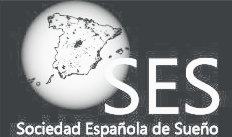Drug-induced sleep-endoscopy in children’s sleep related breathing disorders
Esteller E1, Mulas D2, Haspert R2, Matiñó E3, López R3, Girabent-Farrés M4. Acta Otorrinolaringol Esp. 2015 Nov 20 [Article in English, Spanish]
INTRODUCTION: Drug-induced sedation endoscopy is a valid tool to assess site obstruction of the upper airway responsible for children’s obstructive Sleep Apnea The aim is to show the experience of an ENT department with Drug-induced sedation endoscopy in children selected forsleep apnea surgery METHODS: Includes 56 cases between 2 and 12 years old (mean age: 59,13±27,29 months) presenting at the Otorhinolaryngology consultation clinic with snoring and apnea. Prior polysomnography had been practiced and mean AHI was 6,32±8,71. The distribution of cases was 10 persistent sleep apnea (17.85%), 15 clinical disproportion (26.78%) and 31 conventional (55.35%). All sleependoscopies were performed in the operating room and Chan classification was used to assess the areas of collapse. RESULTS: In cases of residual disease the most affected regions were the side walls of the oropharynx (70%) and turbinate (70%) and the most frequently applied surgery was total tonsillectomy followed by second tongue tonsil reduction and turbinate radiofrequency. In clinical cases of desproportion, the most affected regions were the oropharyngeal side walls (93.3%) and adenoids (66.6%). The most frequently applied surgery in this group was adenoidectomy and radiofrequency tonsillotomy. CONCLUSION:Drug-induced sedation endoscopy is a technique that can be incorporated easily into medical practice, mostly in children with residual sleep apnea syndrome or those suspected to have some cause other than adenotonsillar hypertrophy
Ventana Científica. Diciembre 2015. Artículo 38
Drug-induced sleep-endoscopy in children’s sleep related breathing disorders


